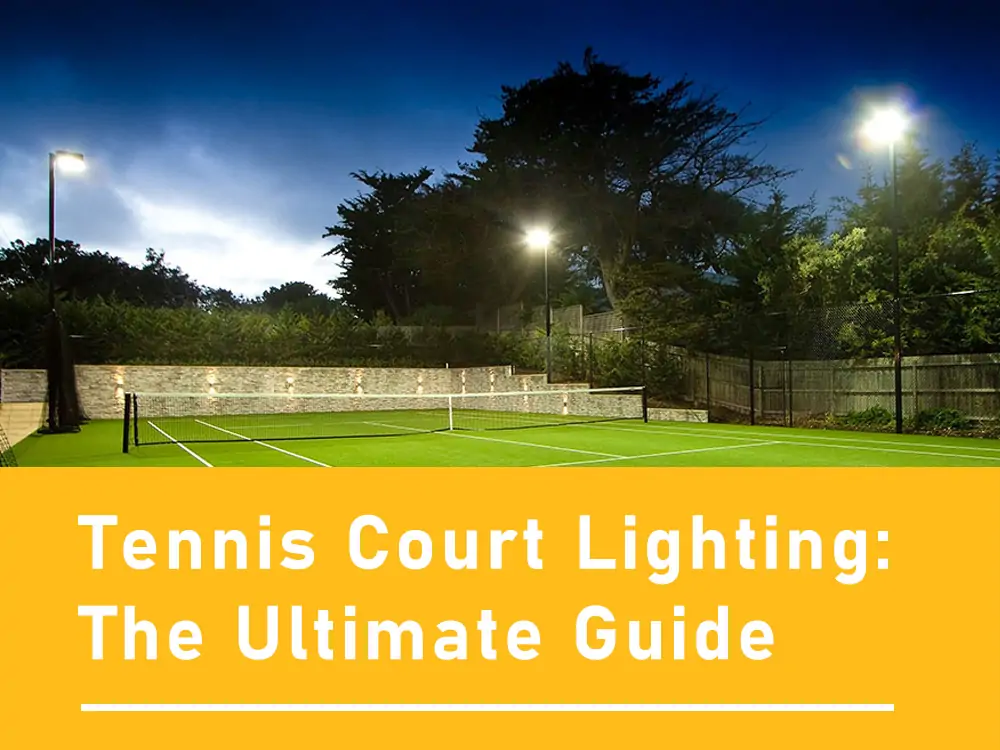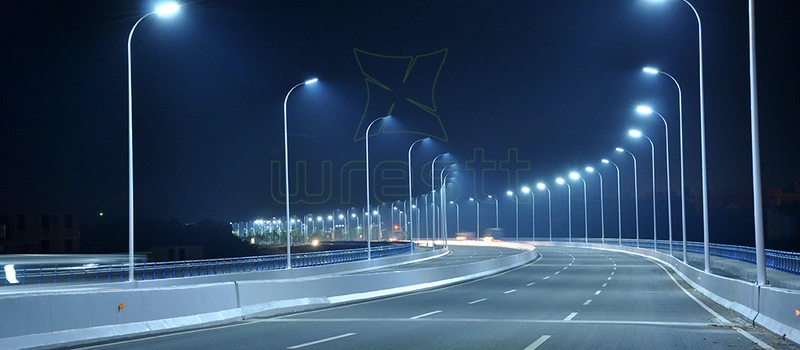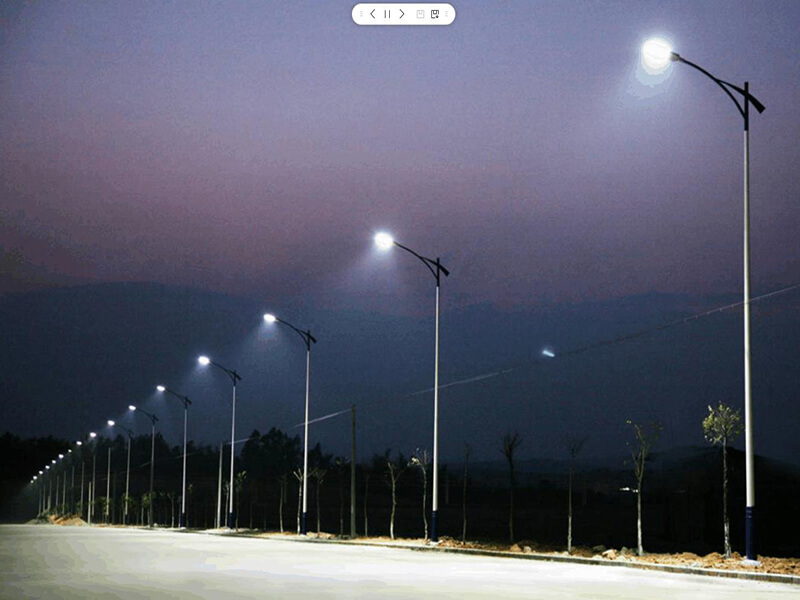Introduction:
Tennis is often dubbed the “sport of kings.” It has captivated audiences and athletes alike for centuries. As with any sport, proper facilities and equipment are crucial. This is for an optimal playing experience. One key aspect often overlooked but impactful is tennis court lighting. In this comprehensive guide, we delve into the intricacies of tennis court lighting. We will explore its importance, design principles, technological advancements, and practical considerations.
Importance of Tennis Court Lighting
Tennis is a versatile sport, played in various environments and conditions. Daytime matches under natural sunlight offer ideal visibility. But many games extend into evening hours or take place indoors. Effective lighting ensures that players can perform at their best. It is regardless of the time of day or weather conditions.
Moreover, proper lighting enhances safety on the court. It reduces the risk of accidents and injuries. Clear visibility of the ball’s trajectory, court lines, and surroundings is essential. It enables players to react quickly, minimizing the likelihood of collisions or missteps.
Additionally, well-lit tennis courts provide optimal viewing for spectators and enhance the experience.
Tennis Court Lighting Layout
Designing an effective lighting layout for tennis courts is critical. A well-executed lighting plan ensures consistent illumination. It minimizes glare and enhances visibility. It helps players perform at their best while ensuring safety on the court. In this section, we explore the key factors and look at what makes a successful tennis court lighting layout.
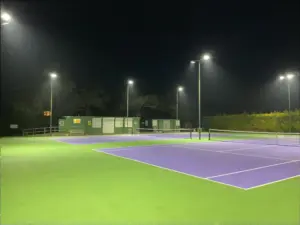
-
Fixture Placement and Orientation
The placement and orientation of tennis light fixtures are fundamental. This is to achieve uniform illumination across the entire playing surface. Mounting height, aiming angle, and spacing between fixtures are important. This is to lessen shadows, glare, and dark spots.
Light fixtures remain along the perimeter of the court. Fix them at a height to provide wide-angle coverage. They should not obstruct the players’ view or interfere with gameplay. The aiming angle of the fixtures should be downward onto the court surface. This ensures even distribution and minimizes light spillage beyond the playing area.
Additionally, the orientation of the fixtures should be considered. They should be relative to the sun’s path and prevailing wind direction to mitigate glare and shadowing effects at different times of the day.
-
Lighting Levels
The Illuminating Engineering Society recommends lighting levels for various types of tennis courts. Professional-level competitions need higher lux levels than recreational or training facilities. A typical range for tennis court lighting falls between 200 to 500 lux. Specific requirements vary on factors such as court size and surface type.
Uniformity ratios express the ratio of lighting levels on the court surface. Fix their height to ensure consistent brightness. They lessen visual discrepancies that could affect player performance.
-
Glare Control and Light Quality
Effective glare control is essential for optimizing visibility and minimizing discomfort for players. A glare occurs when excessive tennis lights come toward the eyes. It causes visual discomfort, reduced contrast perception, and potential gameplay distractions.
Light fixtures need appropriate shielding to mitigate glare. Diffusing mechanisms help direct light downward onto the playing surface, lessening upward or lateral light spillage. Selecting lighting technologies such as tennis court LED lighting fixtures is important. They have precise optics and diffusers and can further enhance visual comfort.
Pay attention to the color rendering properties of the light source. This is to ensure an accurate perception of ball color and court lines. High-quality lighting with a high CRI helps players make accurate judgments. This enhances the playing experience.
-
Energy Efficiency and Sustainability
Incorporating energy-efficient lighting and sustainable design help reduce operational costs, lessen environmental impact. This also enhances the long-term viability of tennis court lighting systems.
LED (Light Emitting Diode) is the preferred choice for tennis court illumination. This is due to their superior energy efficiency, longevity, and versatility. LED fixtures consume less energy than traditional lighting sources.
Furthermore, tennis court LED lighting technology offers precise control over lighting levels. It allows for seamless integration with smart lighting controls and automation systems. It enables further energy savings through optimized scheduling, dimming, and occupancy sensing.
-
Flicker Control
Flickering or pulsating light can be distracting and disrupt gameplay. Utilizing lighting technologies with stable output and minimal flicker is important. LED lights for tennis courts ensure a steady and consistent illumination.
Tennis Court Lighting Requirements: Ensuring Optimal Visibility and Performance
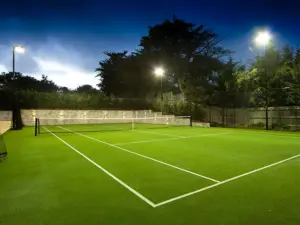
Tennis court lighting requirements encompass a set of standards and guidelines. They aim to achieve optimal visibility, safety, and performance on the court. These requirements dictate various aspects of lighting design. These include illuminance levels, uniformity, glare control, and energy efficiency. With these specifications, tennis facilities can create an environment conducive. In this section, we delve into the key requirements for tennis court lighting.
-
Illuminance Levels
Illuminance, measured in lux (lx), refers to the amount of light falling on a surface. Adequate illuminance levels are essential for ensuring the ball’s visibility. Tennis court lighting requirements specify recommended illuminance levels. This varies for different types of courts and usage scenarios.
For professional-level competitions, tennis court LED lights of 500 to 1000 lux are good. This is to meet the rigorous demands of competitive play and television broadcasting. Recreational and training facilities may have lower illuminance requirements. They fall within the range of 200 to 500 lux. It depends on court size, surface type, and intended usage.
-
Uniformity
A uniformity ratio of 0.7 or higher is generally recommended. This is to achieve consistent brightness and lessen glare and shadowing effects. Achieving uniform lighting distribution requires careful planning of LED tennis court lighting placement. This includes aiming angles and spacing to drop dark spots and hotspots.
-
Energy Efficiency
Energy efficiency is an important consideration in tennis court lighting design. There is a growing emphasis on sustainability and cost savings. Tennis court lighting requirements may include provisions for energy-efficient lighting technologies. Tennis LED lighting fixtures offer significant advantages in energy consumption, longevity, and performance.
Technological Advancements
Recent advancements in lighting technology have revolutionized the landscape of tennis court illumination. They offer enhanced performance, energy efficiency, and sustainability:
a. LED Lighting
LED technology has emerged as the preferred choice for tennis court lighting. It offers many benefits. LED fixtures offer superior energy efficiency, longevity, and versatility compared to metal halide or fluorescent lamps. They also provide instant illumination without warm-up time.
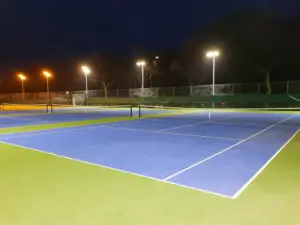
b. Smart Lighting Systems
Smart controls and automation features enhance flexibility and efficiency. These systems allow for remote monitoring and scheduling. They help change lighting levels based on environmental conditions or specific user preferences. They optimize energy usage and cut wastage. Smart lighting solutions contribute to sustainability efforts and cost savings over time.
c. Dynamic Lighting Effects
Some advanced lighting systems, such as LED tennis court lighting, can create dynamic lighting effects. They enhance the visual appeal of tennis courts during events or competitions. Customizable color options and programmable lighting sequences are also important. Synchronized light shows can elevate the spectator experience and create a captivating ambiance.
5. Practical Considerations
Factors for planning or upgrading tennis court lighting:
a. Regulatory Compliance
Ensure compliance with relevant tennis court lights standards. It includes building codes and local regulations governing sports facility lighting. Adhering to these guidelines ensures optimal performance and safety. It also avoids potential legal issues. Consultation with lighting professionals, engineers, and regulatory authorities can help. Ensure compliance with applicable standards, which helps in successful implementation. It will only help in improving the lighting layout.
b. Budget and Cost Analysis
Assessing the initial investment and operational costs of tennis court lights is essential. They can help in long-term savings associated with different lighting options. It is crucial for making informed decisions. LED lighting systems may have higher upfront costs. However, their lower energy consumption and maintenance requirements offer significant savings over time.
c. Maintenance Requirements
An important factor is the maintenance needs of the chosen lighting system. This includes cleaning, periodic inspections, and potential component replacements. Opt for fixtures with durable construction. This warranties to cut downtime and maintenance expenses.
d. Environmental Impact
Consider the environmental implications of the tennis court lights system. They include energy consumption, carbon footprint, and recyclability. Choose energy-efficient LED fixtures and put in place sustainable practices. Use renewable energy sources or incorporate light pollution mitigation measures. They can help cut environmental impact.
Conclusion:
In conclusion, tennis court lighting plays a pivotal role in enhancing gameplay. It ensures safety and creates immersive experiences for players and spectators alike. Understanding proper lighting design principles is important. This can help tennis facilities achieve optimal lighting solutions.

